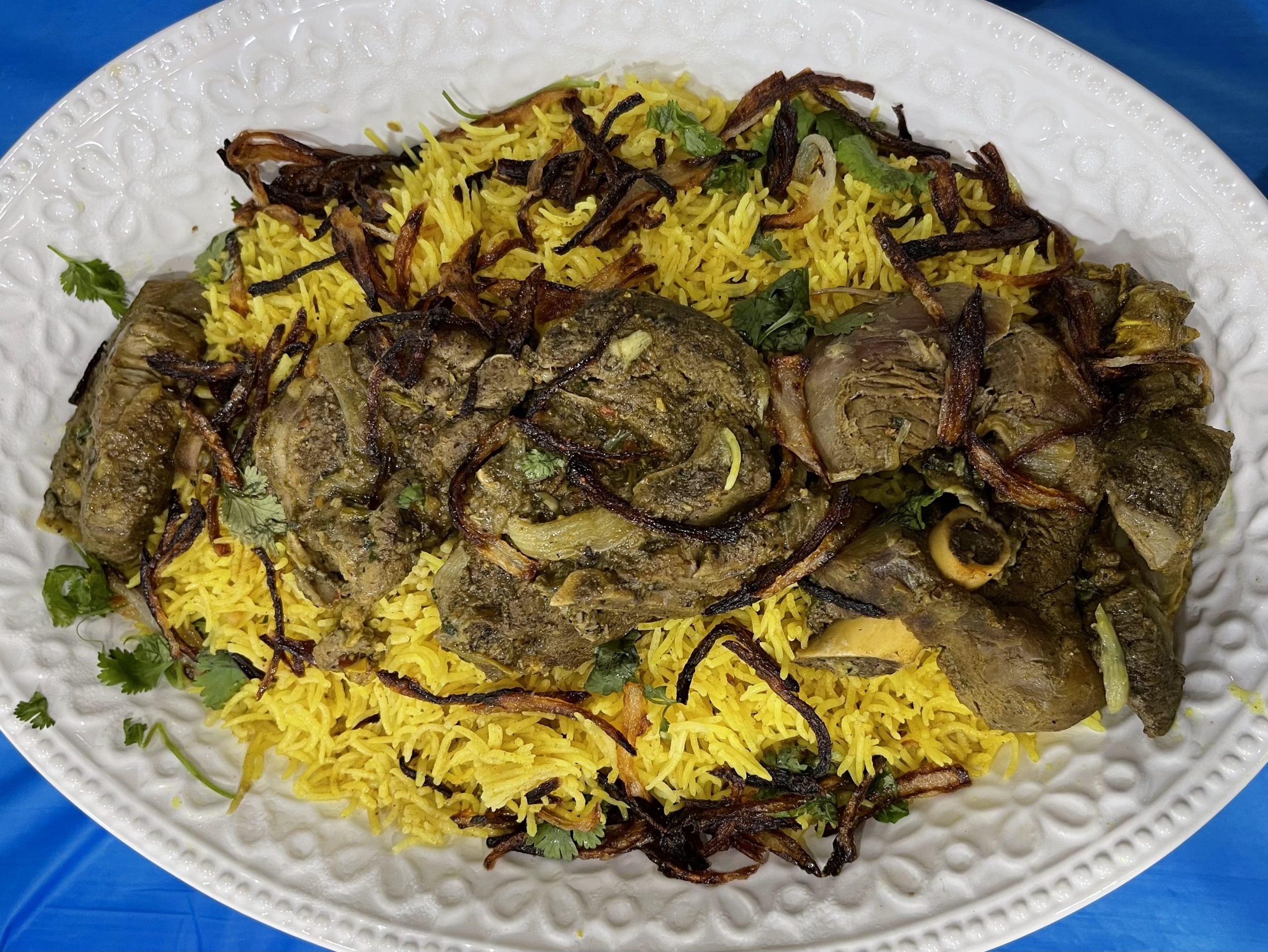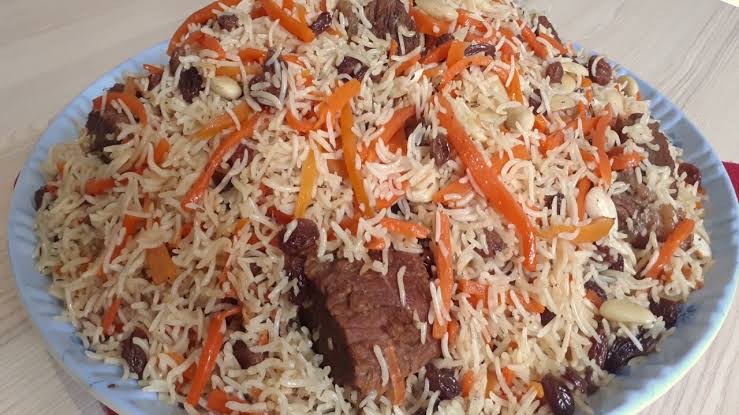Taysir’s Ful Medames Four Ways
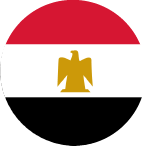 Egypt
Egypt 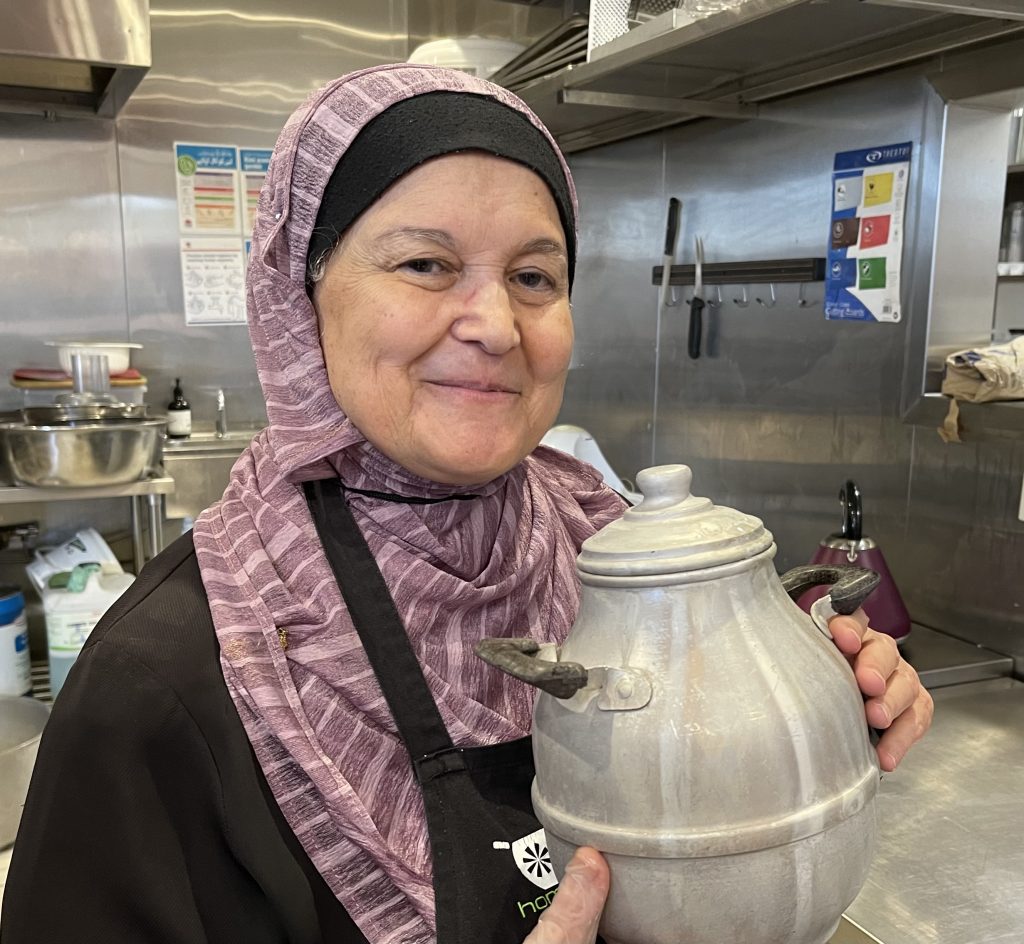
I came to Australia fifty years ago. I was twenty-two years old, fresh out of uni and had already been married for a year. My husband came to Australia after we were married and I followed him a year later. He’s a pharmacist and he always wanted to work overseas. During uni holidays he would go to Germany and do his practice there. When he finished uni, he wanted to return there to work but political issues between Germany and Egypt prevented that. We applied to Australia and the USA and were approved for both but people told us, ‘Go to Australia! They have better weather there’, so we decided to come here!
When my husband left to work in Australia, I had one more year of uni to go and my mum insisted, ‘You’re not leaving until you finish your bachelor’s degree.’ She had not had a university education and she didn’t want the same for her children, so all five of us (three girls and two boys) went to uni and graduated with good degrees. My elder sister has a PhD in physical chemistry.
My family and I are from Cairo and I spent much of my childhood and teens growing up there. Dad used to work in Sudan so sometimes we went to schools in Sudan and sometimes in Egypt. It was peaceful in Sudan then but so hot. I went to a Catholic girls’ primary school which was very, very strict. As some families were poor, the nuns adopted some girls and they seemed really very harsh with them, but okay with us. After that I went to Unity High School, an international school with many different expat nationalities. I remember my school days very well, but sadly I didn’t stay in touch with the friends I made at school in Sudan. After Year 8, I went back to Egypt and attended an English school in Cairo until I finished my A’levels. Despite the fact that I haven’t seen them in forty years or so, I’m still in touch with my friends from Egypt and we have a group on WhatsApp.
I only knew my grandma on my dad’s side. She was from Cairo too but she also lived with us in Sudan. She was a lovely, lovely lady. I felt that she really loved me. She did a lot of things with me, like cutting my fringe! I remember Mum was never happy about that but she couldn’t say much. She had to respect her mother-in-law’s wishes.
I was in the middle of my Year 12 exams in Cairo when the Six Day War between Egypt and Israel began. The exams had to be suspended. It was a terrible time for us. We lived on the outskirts of Cairo which was very close to where the bombs were falling and so we had to pack our bags and walk further into Cairo where it was safer. No cars would stop for us, not even taxis. Everyone was fleeing.
When I finally finished Year 12, my parents and some of my siblings went back to Sudan. I had the option of going to Cairo University or to a Cairo University campus in Khartoum. My older sister was already studying there and had made some great friends so I decided to go to uni there too. I studied a Bachelor of Commerce, specialising in management. My parents were still in Sudan when I left for Australia but a year or two later, my dad finished his business there and they returned to Egypt.
I met my husband through extended family but because there is a seven year age gap between us, I never got to meet him when we were growing up. You could say it was an introduced marriage rather than an arranged marriage and 52 years later we are still happily married with children and grandchildren.
Maybe having been at an international school and having moved between Cairo and Khartoum helped but making friends in Australia was not hard. My husband introduced me to the friends he had already made and I made more friends playing tennis. When I started work, I made friends there too. I started in a Redfern office as a typist. It was disappointing that I wasn’t able to use my qualifications but after that, I got a job in accounting which was something I had studied in my degree for a few terms and I continued with that until I fell pregnant with my eldest daughter, Yasmin.
Shadia Melligi (see Shadia’s Koshari) and I met when Yasmin became friends with her daughter. Perhaps inevitably, my husband and I found ourselves gravitating towards Egyptian people here in Australia and have always had an Egyptian group for picnics or going to the beach. We are still in touch with the friends we made in 1971. I suppose these friends remind us of our roots and give us a link back to our families and where we grew up. The last time I went back to Egypt was in 2019, just before COVID hit, to visit my two brothers. My sister, who was 2 years older than me, passed away during adulthood but I’m lucky that my eldest sister lives here in Australia.
Ful Medames is a quintessential Egyptian street food and a comfort food. There are three main versions: lemon and garlic, tomato and onion and one with tahini. It is Egypt’s official national dish and very popular food among all classes. It is eaten daily at breakfast but in Ramadan it is eaten at Suhoor, the meal before the dawn prayer which has to sustain us throughout the fasting day.
Fava beans or Ful has been known to Egyptians since the time of the Pharaohs. The middle and lower classes used it as a substitute for protein, whilst the upper classes used it as food for beasts! Originally, we believe it would have been cooked with utensils made of pottery but copper and then aluminium became the main material used for pots and pans.
History tells that Ful Medames was created by a Greek Khawaja (foreigner) by the name of Demos which is how it gets the name Medames. This Greek man lived in Egypt and owned a public bath. All bath houses had a warehouse next to them, burning rubbish to heat the water and the story goes that one day, Demos decided to try and use that heat to cook Ful overnight. The next morning, he was surprised to find that the beans were cooked to perfection.
Over the centuries Ful became popular across the Arab world as Egyptian merchants and other travellers moved around, whether to the Levant or to Sudan. Egyptian pilgrims also introduced the beans to the Hijaz region which is now known as Saudi Arabia.
One of my favourite childhood memories is of the Ful seller coming to our street in the early morning and in Ramadan ahead of sunrise. He would have a huge pot (called a Fawala) of cooked beans and everyone would come with their own plates and dishes or pots and pans and buy them from him. We would then take them home and finish the dish by adding a tomato and onion base (you can make this by simmering a tin of tomatoes with a chopped onion), cumin, salt and pepper, chilli or lots of olive oil, garlic and lemon or a few good dollops of tahini. I also like it with fresh cucumber and chilli flakes and find it’s fun to experiment.
Our family favourite is with tomatoes and chilli flakes. Egyptians use lots of tomatoes – I think it is something about the soil. Ful really tastes wonderful there. It is usually eaten with Egyptian flatbread (Lebanese bread is similar and easier to buy in Australia) and sides like pickles, fried eggplant or falafel. Feel free to use your imagination and try your own combinations, using whatever takes your fancy.
The nearest traditional Australian dish is probably baked beans but Ful Medames is a bit different. Do try it and see which version you like. You can buy tinned fava beans in Middle Eastern grocers in Australia and in the international aisles of some big supermarkets. The tinned fava beans that you buy in Egypt and which are exported to Australia shows which recipes was used e.g. Egyptian, Saudi etc. Just rinse them well under running water and use my family recipe which I’m sharing below.
My mother always estimated the amount of ingredients by eye and taste but before I moved to Australia, I asked her to write everything down for me. I now cook by eye and taste too. During Ramadan, it’s permitted to dab your tongue to get an idea of the seasoning which is what most restaurant chefs do, but you can’t taste what you are cooking so your eyes and instincts are more important.
This recipe is the one Shadia and I used this Ramadan when we ran an Egyptian Iftar Kitchen with the charity Penny Appeal and their volunteers, Team Orange. We multiplied the quantities and cooked up 200 portions of Ful – 100 with tomato and onions and 100 with olive oil, garlic and lemon. We also cooked 200 portions of Shadia’s Koshari. The food was then distributed to local people who are homeless or suffering food shortages. We believe the giving and sharing of food is an act of charity and COVID has increased the number of vulnerable people, so this was a particularly lovely thing to do in Ramadan – not just cooking for our families and friends but for the wider community in need.
If you would like to help fund Penny Appeal’s Iftar Kitchens in Australia please go to https://www.pennyappeal.org.au/iftar-kitchens
Whether you are cooking for you family, or multiplying quantities for friends or for people in need, I hope you enjoy cooking and eating my family recipe. Enjoy.
Taysir Ghazi
April 2022
Share this story
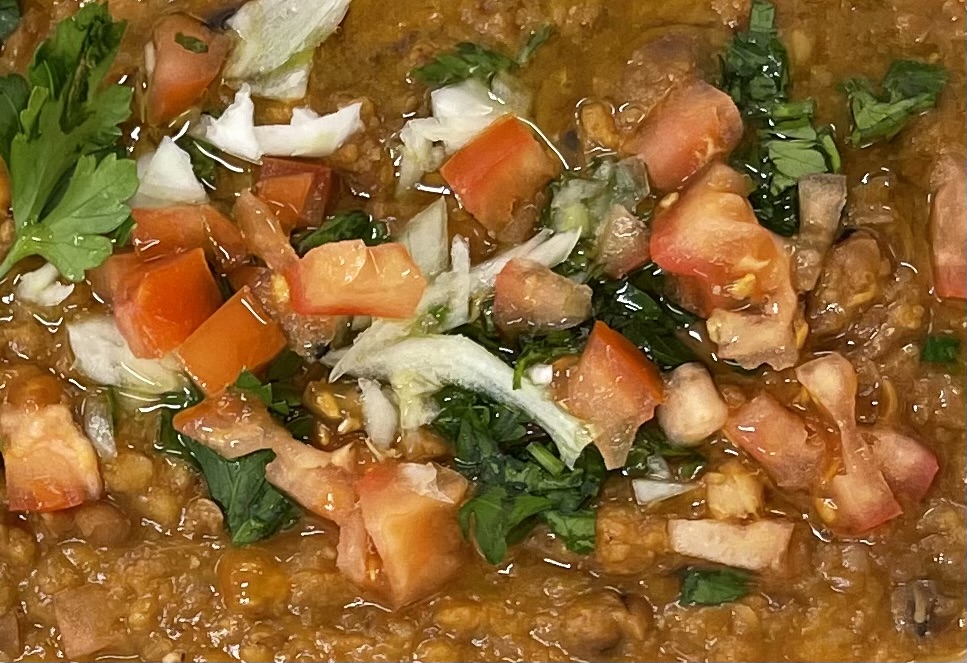
If using tinned beans, rinse the beans and the lentils then place both in a large saucepan covered with water. Put a lid on the pan.
If using dried beans, rinse and put in a deep pan and cover with plenty of water. Put the lid on and soak for few hours or overnight. You may need to top up the water.
(You can use either dried beans or tinned. Tinned save time, dried beans are more authentic. Please note: the prep time of 1 hour is for using tinned beans.).
If you are using tinned beans, simmer for 1 hour.
If using dried beans, after soaking the beans and lentils, drain then put back in the pan and cover with fresh water. Bring to the boil then simmer on a low heat for 4-5 hours. If the water evaporates, just add more. The beans are ready when they are tender.
Whether you have used dried beans or tinned beans, drain the pot and either leave the beans whole or mash, blend or crush them with your hands. I usually do half and half.
To serve, divide the bean mixture into four serving bowls, and season.
In the first bowl, add the garlic, cumin, olive oil and lemon juice;
to the second, add the tomato and cooked chopped onions (if using);
to the third add a good dollop of tahini;
and cucumber and chilli flakes to the fourth.
These are my suggestions for toppings but be creative! Fun Medames goes with almost anything.
Serve hot with pita bread and a drizzle of olive oil.
